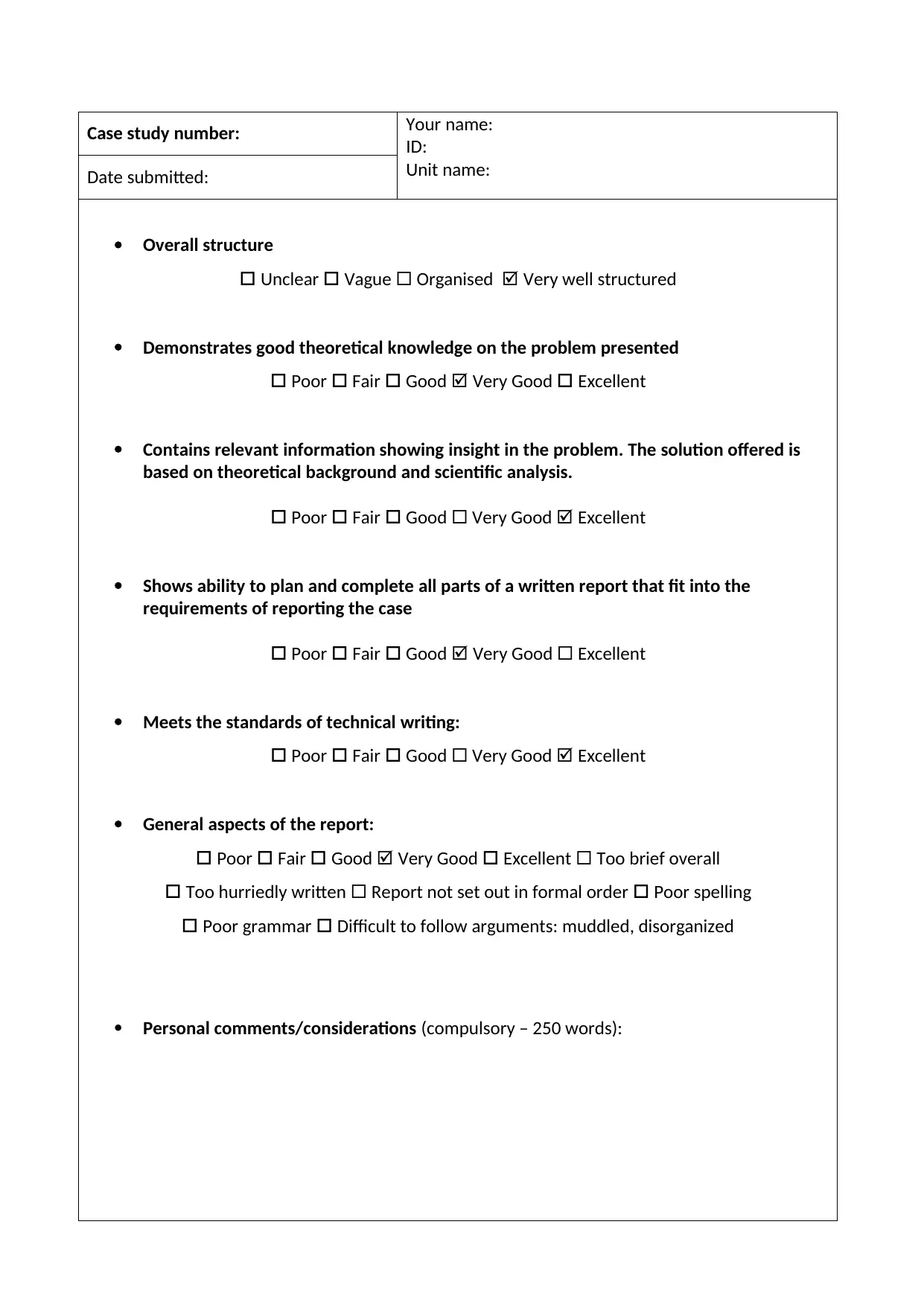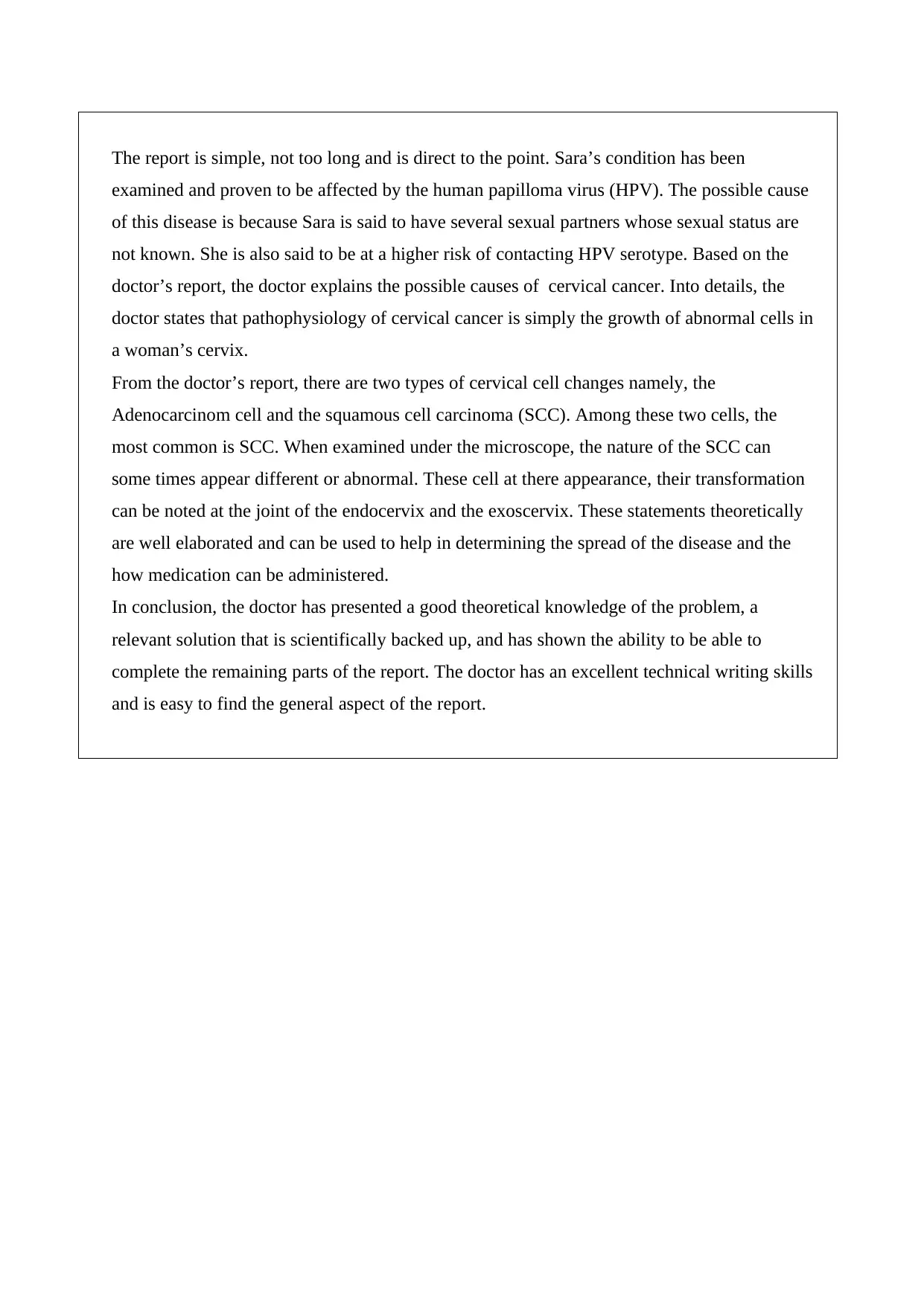Case Study: Cervical Cancer Pathophysiology, HPV, and Risk Factors
VerifiedAdded on 2022/10/06
|2
|435
|3
Case Study
AI Summary
This case study examines the pathophysiology of cervical cancer, focusing on the growth of abnormal cells in the cervix, specifically the squamous cell carcinoma (SCC). It explores the role of the human papillomavirus (HPV) as a major risk factor, highlighting HPV16 and HPV18 as the most carcinogenic types. The report analyzes the doctor's assessment of Sara's condition, linking her HPV infection to multiple sexual partners and potential serotype risks. The analysis includes a discussion of the transformation zone where the exocervix joins the endocervix, where SCC often begins. The report emphasizes the doctor's strong theoretical knowledge, scientifically backed solutions, and excellent technical writing skills, demonstrating a clear understanding of the disease and its implications. The solution offers insights into how the spread of the disease can be determined and how medication can be administered.
1 out of 2






![[object Object]](/_next/static/media/star-bottom.7253800d.svg)